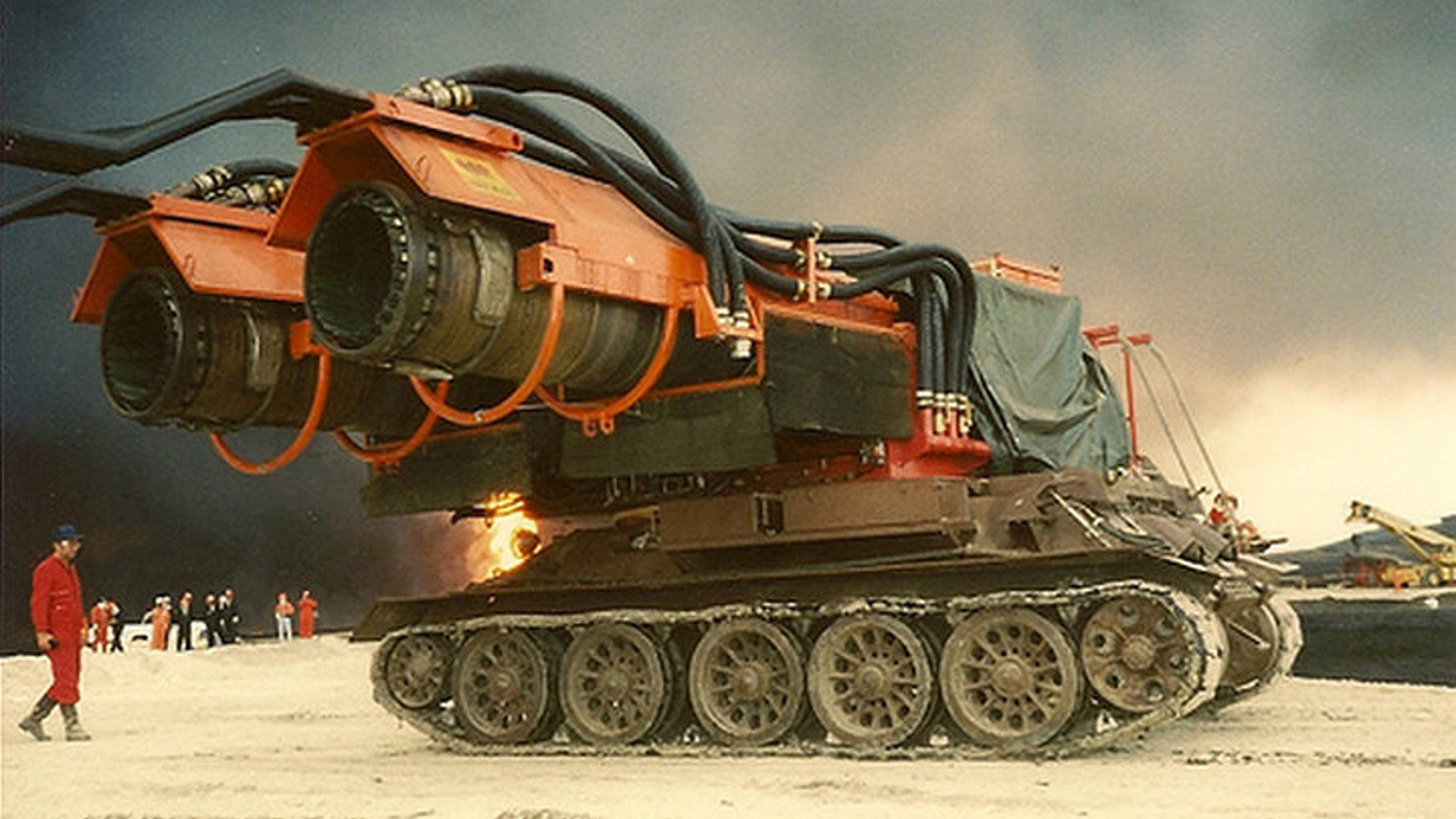

I want to unleash Big Wind on an open flame. By that, you’re probably assuming I mean I want skin grafts where the sun don’t shine. Grow up. What I mean is I want a chance to drive the Hungarian firefighting tank of that name, and use it to extinguish the fires of Hell itself, because it probably could.
Big Wind, or Windy as it’s alternatively known according to a 2001 Car & Driver highlight, was built in 1988 from the chassis of a World War II-era Russian T-34-85 tank, per Hungary’s Total Car. Thereupon was mounted a pair of MiG-21 fighter-sourced R-25 jet engines, together generating 27,000 pounds of thrust. They produce 4,591 cubic feet of exhaust gas each second, into which six nozzles spray 220 gallons of water, enough to put out a burning oil well.
This machine was first deployed in the wake of the Gulf War to cool the scorched earth left by Saddam Hussein‘s forces as they retreated from Kuwait, bombing wells as they went. Big Wind was airlifted in via C-130 with its crew of three Hungarian operators, comprised of a driver and jet engine tech, and one outside spotter in heat-reflective gear who directed the vehicle with a remote. Together, they’d creep toward a burning oil well at the tank’s top speed of three mph, giving the howling jet of flame time to make Big Wind’s body so hot it couldn’t be touched—even from the inside. Working the controls reportedly required gloves.
Upon reaching point-blank range, they’d fire the engines up to 70 percent (the highest they could operate at low altitude) and turn on the water, putting out the fire. It was brutal on Big Wind’s operators, but to them, infinitely preferable to the standard practice of the day, which involved placing explosives to starve the fire of oxygen. The Hungarians’ method seems to have been the more effective one, too, as across Big Wind’s 43-day deployment, the tank is said to have extinguished nine or 10 well fires, as opposed to the two to three reportedly averaged by the 24 to 27 other teams brought in from around the world.

Since its exploits in Kuwait, Big Wind has reportedly been modernized with the chassis of a T-55, at the cost of a couple of million dollars. A second example was nearly built, but seeing as Big Wind’s glory days are probably behind it, that seems unnecessary, especially seeing as it didn’t prove itself up to the task of the very largest fires—it reportedly failed to kill a major gas fire in Hungary in 2000. Sometime thereafter, Big Wind was reportedly mothballed for at Tököl Airport until 2014, when Hungarian petroleum company MOL Group recommissioned the machine.
Big Wind is still out there, just waiting for the day when it will again huff and puff and blow your oil well fire out.

Got a tip or question for the author? You can reach them here: james@thedrive.com